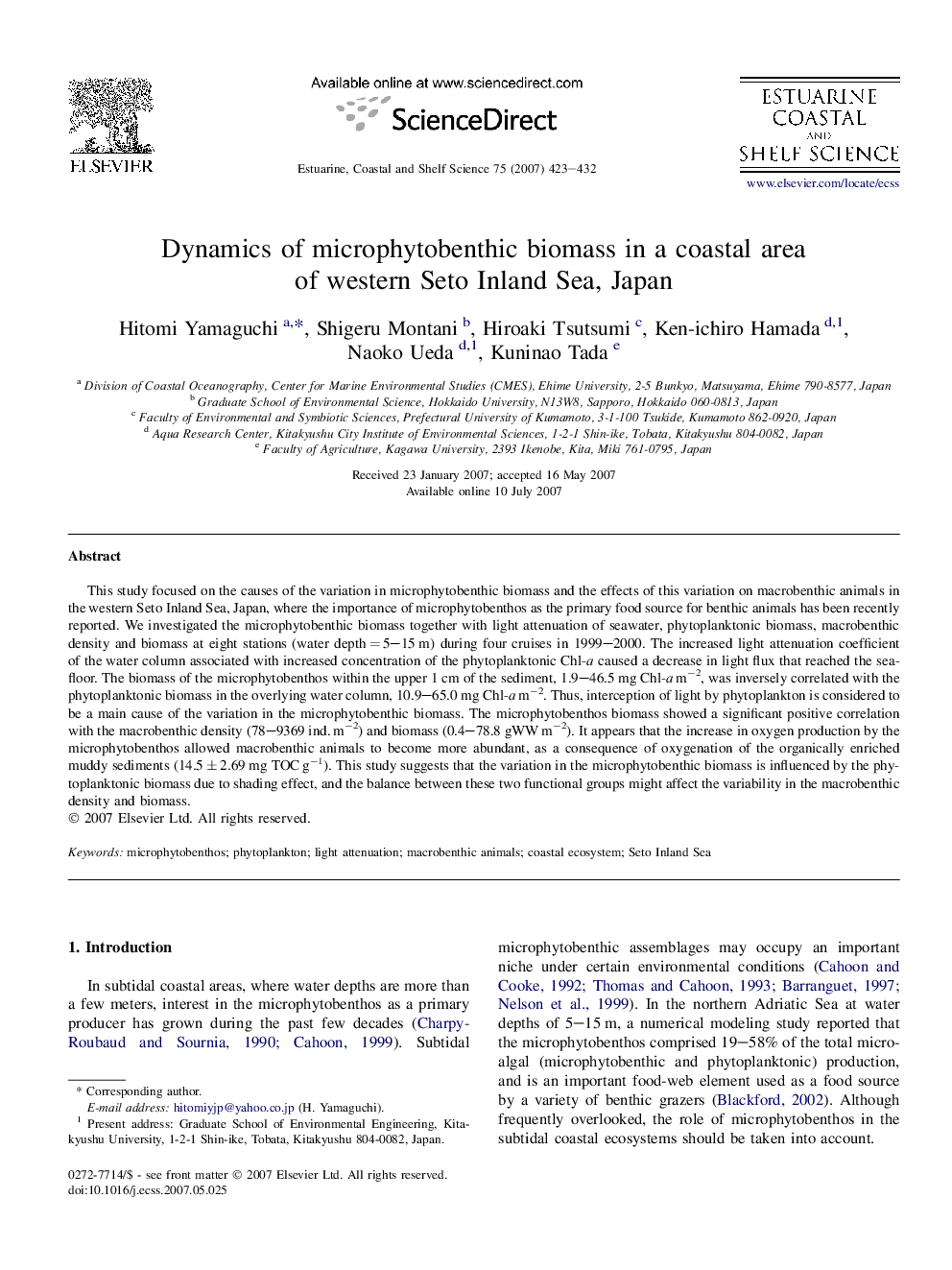| Article ID | Journal | Published Year | Pages | File Type |
|---|---|---|---|---|
| 4541638 | Estuarine, Coastal and Shelf Science | 2007 | 10 Pages |
This study focused on the causes of the variation in microphytobenthic biomass and the effects of this variation on macrobenthic animals in the western Seto Inland Sea, Japan, where the importance of microphytobenthos as the primary food source for benthic animals has been recently reported. We investigated the microphytobenthic biomass together with light attenuation of seawater, phytoplanktonic biomass, macrobenthic density and biomass at eight stations (water depth = 5–15 m) during four cruises in 1999–2000. The increased light attenuation coefficient of the water column associated with increased concentration of the phytoplanktonic Chl-a caused a decrease in light flux that reached the seafloor. The biomass of the microphytobenthos within the upper 1 cm of the sediment, 1.9–46.5 mg Chl-a m−2, was inversely correlated with the phytoplanktonic biomass in the overlying water column, 10.9–65.0 mg Chl-a m−2. Thus, interception of light by phytoplankton is considered to be a main cause of the variation in the microphytobenthic biomass. The microphytobenthos biomass showed a significant positive correlation with the macrobenthic density (78–9369 ind. m−2) and biomass (0.4–78.8 gWW m−2). It appears that the increase in oxygen production by the microphytobenthos allowed macrobenthic animals to become more abundant, as a consequence of oxygenation of the organically enriched muddy sediments (14.5 ± 2.69 mg TOC g−1). This study suggests that the variation in the microphytobenthic biomass is influenced by the phytoplanktonic biomass due to shading effect, and the balance between these two functional groups might affect the variability in the macrobenthic density and biomass.
